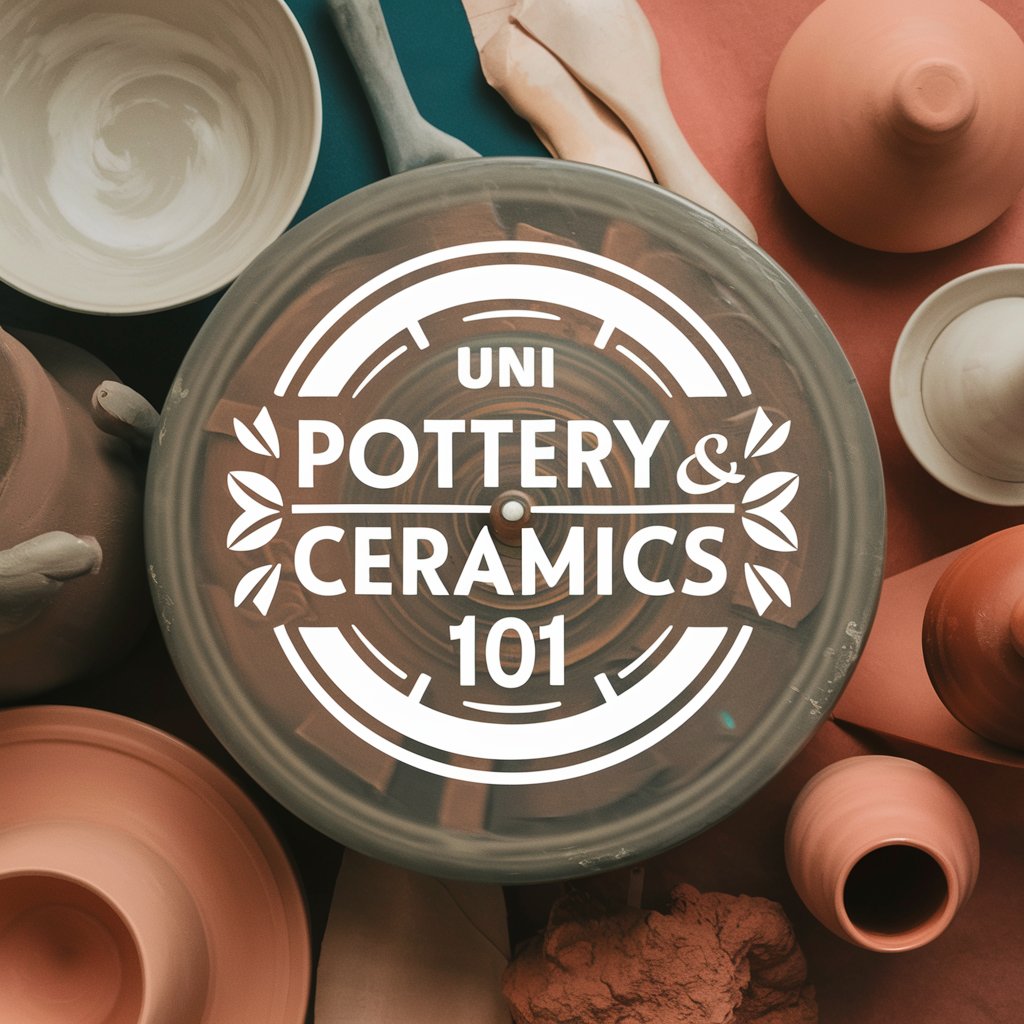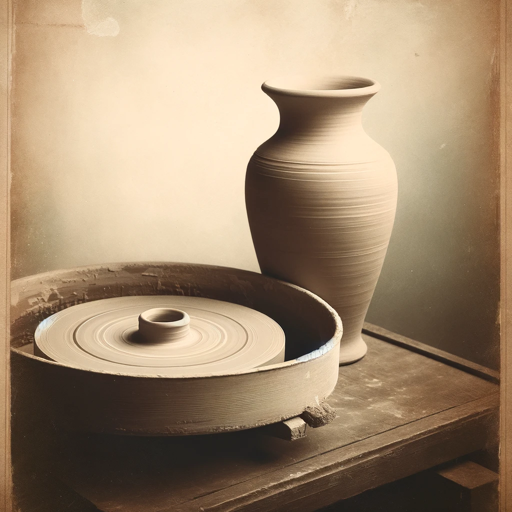
Ceramic clays and firing advice - Ceramic Clay & Firing Tips

Master Ceramics with AI-Powered Guidance
Get Embed Code
Overview of Ceramic Clays and Firing Advice
Ceramic Clays and Firing Advice is a specialized assistance tool designed to provide detailed, expert knowledge on various aspects of pottery and ceramics. This includes guidance on selecting the right types of clay, using different pottery tools, and mastering techniques like hand-building, wheel throwing, glazing, and firing. The purpose of this tool is to help both beginners and experienced potters enhance their craft by offering tailored advice, troubleshooting common issues, and inspiring creative pottery projects. For example, a beginner might receive step-by-step instructions on preparing and firing their first ceramic piece, while a more experienced artist could learn advanced glazing techniques to achieve unique effects in their work. Powered by ChatGPT-4o。

Key Functions of Ceramic Clays and Firing Advice
Material Selection
Example
Advising on the best type of clay for a project based on the desired finish and durability, such as recommending porcelain for fine, intricate work.
Scenario
A user planning to create dinnerware might be guided to use stoneware clay, which is better suited for such items due to its durability after high-temperature firing.
Technique Guidance
Example
Providing step-by-step instructions on specific pottery techniques like slab construction or pinching.
Scenario
A beginner receiving detailed guidance on how to center clay on the wheel, which is a fundamental skill in wheel throwing.
Troubleshooting
Example
Helping users solve common pottery issues such as cracking or glazing defects.
Scenario
Offering solutions for issues like 'S-cracks' in wheel-thrown pots by adjusting the clay's moisture content and throwing technique.
Creative Project Ideas
Example
Suggesting new project ideas based on user interest, such as making ceramic planters or decorative tiles.
Scenario
Inspiring an experienced potter to explore raku firing techniques to achieve unique, unpredictable color patterns on their pottery.
Firing Schedules
Example
Programming and advice on kiln firing cycles tailored to the specific materials and pieces being fired.
Scenario
Providing detailed firing schedules for a Skutt FireBox kiln to ensure optimal results for both bisque and glaze firings.
Ideal Users of Ceramic Clays and Firing Advice
Beginner Potters
Individuals new to pottery who need foundational knowledge and step-by-step guidance on basic techniques, material handling, and simple projects.
Experienced Ceramists
Seasoned artists looking for advanced techniques, specialized material recommendations, and troubleshooting complex issues in their ceramic creations.
Educational Institutions
Schools and colleges offering courses in ceramics that require a comprehensive resource for students to learn and reference various ceramic processes.
Professional Pottery Studios
Commercial studios that need reliable, expert advice to refine their production processes, solve technical problems, and innovate new products.

Guide to Using Ceramic Clays and Firing Advice
Start by exploring the resources available
Visit yeschat.ai for a trial, accessible without login or a subscription to ChatGPT Plus.
Choose the right clay
Identify the type of ceramic project you wish to create and select a clay body suitable for your firing temperature and desired finish.
Prepare your workspace
Ensure you have a safe and well-ventilated area to work and fire your kiln, following all safety guidelines to prevent accidents.
Use the kiln properly
Familiarize yourself with your kiln's specific model using the manual, understanding the programming, safety features, and maintenance requirements.
Experiment and refine
Test fire small samples to refine your firing curves and glaze applications, adjusting as needed based on results to achieve the best outcomes.
Try other advanced and practical GPTs
Ceramic Artist
Crafting Artistry with AI

Plant Finder
Identify plants instantly with AI

지금 뭐먹지?
AI-Powered Local Dining Guide

AGG, the Allergy Gourmet Guru
Eat Safely, Live Happily with AGG

Korean Lotto Generator
Unlock winning strategies with AI.
GeoPT
Revolutionizing Mineral Exploration with AI

ClayMate: Pottery & Ceramic Shrinkage Wizard Tool
Precision in Every Piece, AI-Powered

Task Project Management
AI-powered task management for Jira and Confluence.

Tax Minimizer
Optimize Your Taxes with AI

Safari Specialist
Navigating Safaris with AI Insight

Trivia Master
Challenge Your Mind, Powered by AI

Tolkien
Explore Middle-earth with AI

Frequently Asked Questions on Ceramic Clays and Firing Advice
What type of clay is best for beginner potters?
Earthenware clay is recommended for beginners due to its forgiving nature in both shaping and firing processes.
How do I prevent my pottery from cracking during firing?
Ensure your pottery is thoroughly dry before firing, heat at a controlled rate, and avoid rapid temperature changes in the kiln.
What safety precautions should I take when firing a kiln?
Always monitor the kiln during firing, keep flammable materials away, ensure proper ventilation, and use personal protective equipment as necessary.
Can I re-fire a piece to correct a glazing mistake?
Yes, pieces can often be re-fired to correct or add additional glaze layers, but ensure the new firing cycle is compatible with the existing glazes and clay body.
How do I choose the correct firing temperature for my clay?
Refer to the manufacturer's specifications for your clay body, and use pyrometric cones to monitor and adjust the kiln's temperature accurately.





